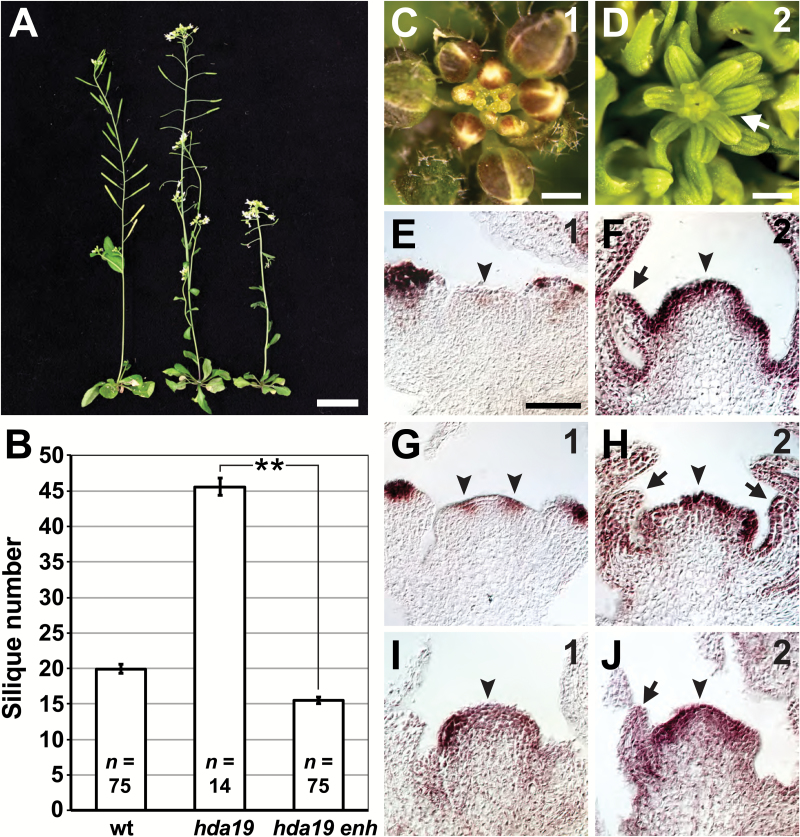Fig. 4.
Enhancement of hda19 reproductive defects by a second-site mutation. (A) Wild-type (wt) (left), hda19 (middle), and an hda19 enhancer (hda19 enh) mutant (right) at 40 d after germination. (B) Numbers of siliques produced before growth termination (for wt) or before the appearance of the stamenoid inflorescence apex (SIA) phenotype (for hda19 and hda19 enh) are shown. Data are represented as the mean ±SE. A statistically significant difference is indicated (**P<0.001; two-tailed t-test). The sample size (n) of each genotype is provided. (C, D) hda19 enh reproductive apices. Inflorescence meristem (IM) phase denoted in the upper right. The SIA phenotype (arrow) is evident at IM phase 2. (E–J) RNA in situ hybridizations of AP3 (E, F), PI (G, H), and AG (I, J) in hda19 enh IMs at phases 1 and 2 (indicated in the upper right). Arrowheads denote ectopic expression of floral organ identity genes in IMs. Arrows indicate stamenoid organs produced by phase 2 IMs. Scale bars: (A) 2 cm; (C, D) 0.5 mm; (E–J) 50 µm.

